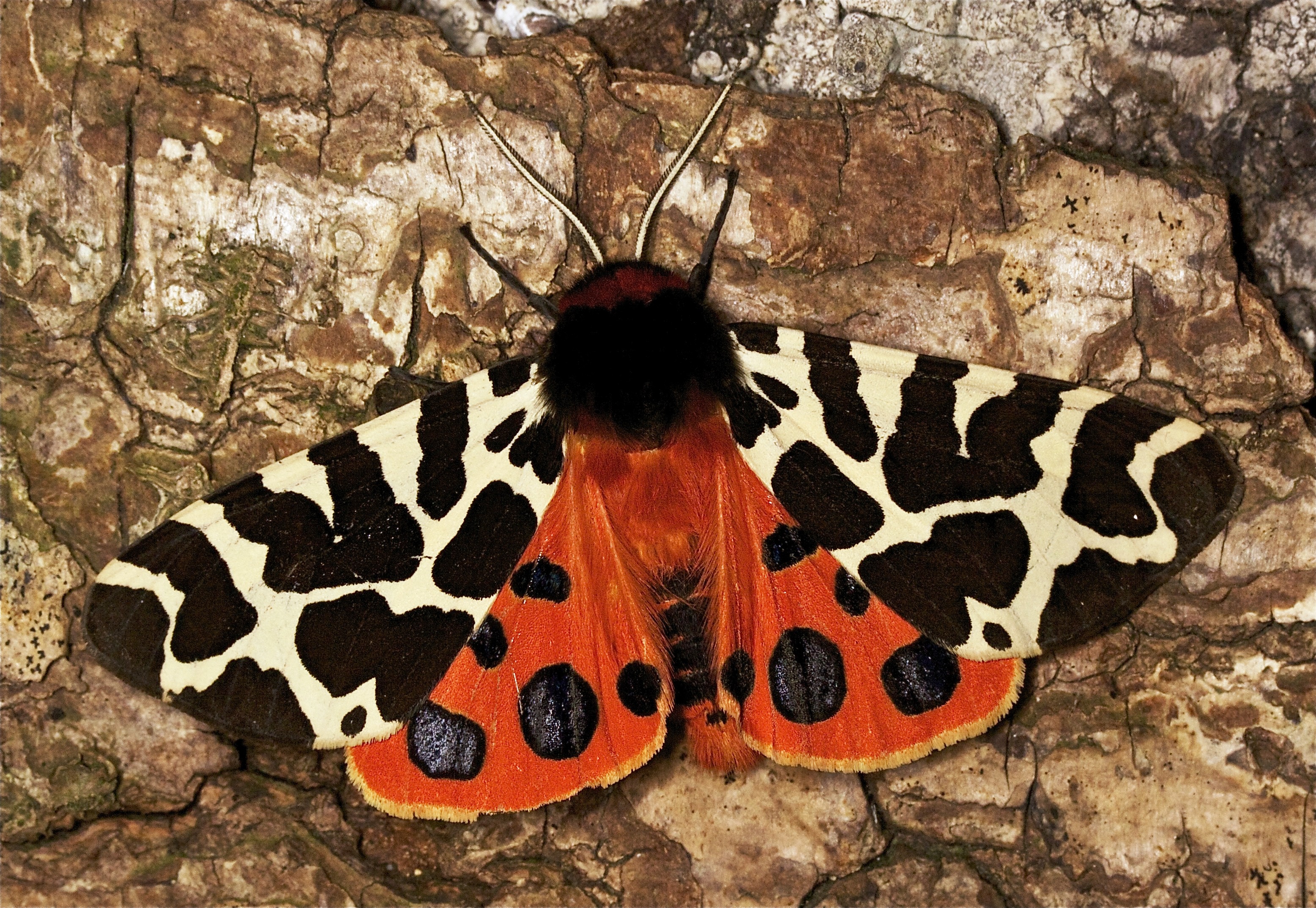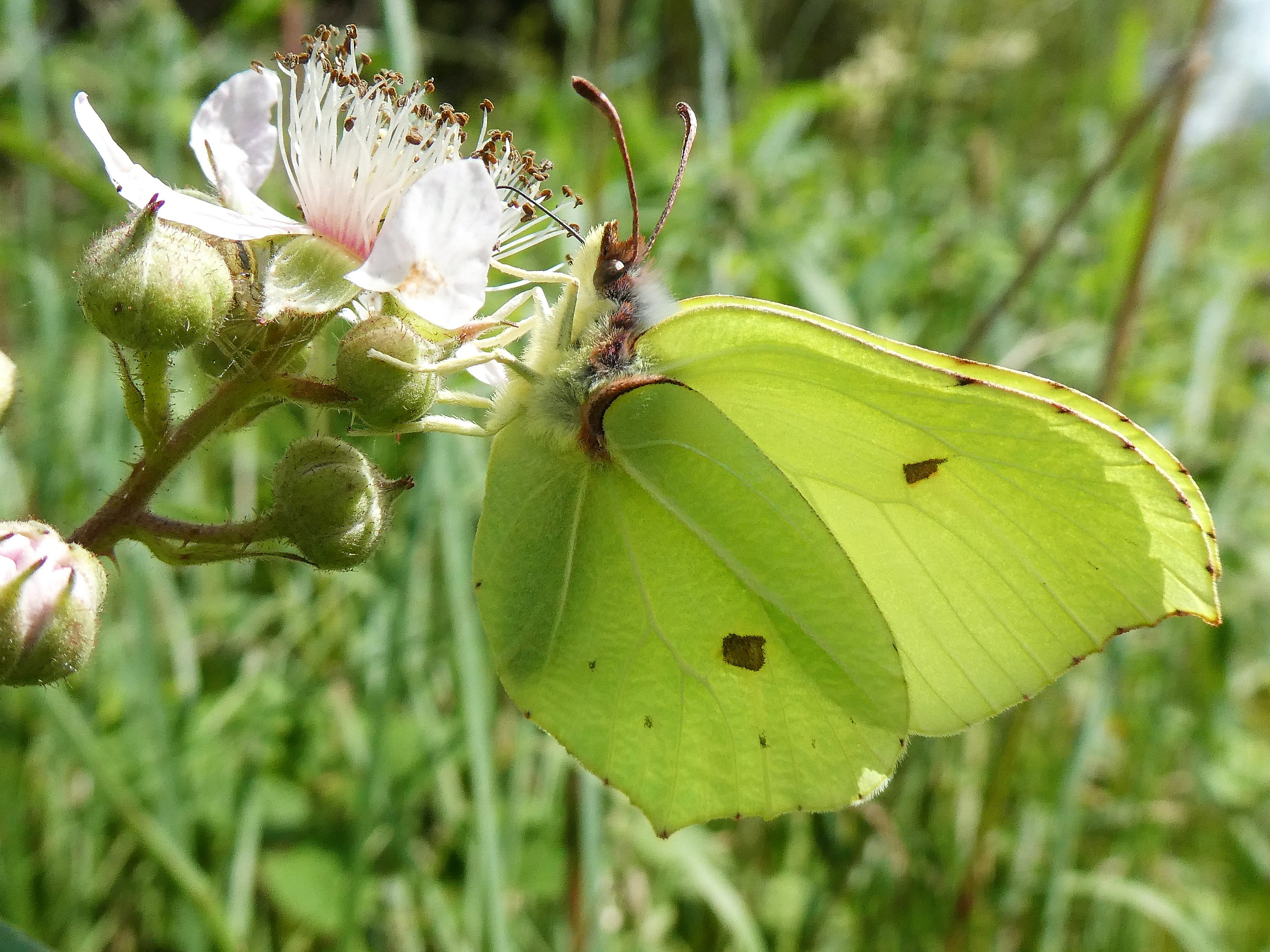Butterflies and moths appear to be simple creatures that flit about fitfully in the warm sunshine or mild, muggy nights, find food, mates, breed and expire, leaving behind their legacy of eggs to commence the next generation.
However, they live in a complex world so butterflies and moths are equipped with a range of equipment to navigate the challenges of life.
Here we will consider three-eyes, nose and mouth
Eyes
Butterflies and moths have two compound eyes on either side of the head. Each eye contains thousands of individual eyes or ommatidia, up to 17,000 in total, each one a working eye. These provide 360-degree vision. Each ommatidium contains a cornea and a cone. These function as a lens. Light travels down a rod behind its cone to reach sensory cells. In moths that fly at dawn and dusk the distance between the cones and sensors is greater than in day-flyers, increasing sensitivity.
It is likely that the short focal length of the ommatidia means that everything within 650 feet (200m) is highly defined. The butterfly/moth’s brain can detect light and darkness very effectively meaning that they can detect movement within its field of vision. This means that they can judge the closeness of a predator and take evading action. This is why you need to approach a butterfly very carefully, slowly approaching for a closer view. Butterfly vision does not detect such careful movement efficiently or at all unless you darken the butterfly’s surroundings.
All-round vision is vital for a vulnerable butterfly. It allows the butterfly to probe the right part of a flower for nectar while keeping watch on the approach of threats or mates.
It is not clear whether butterflies and moths can detect detailed patterns on each others’ wings to identify an individual of its own species. It may be the case that butterflies can only make this identification when they are very close to another butterfly. However, butterflies can see colour. This would explain why male Silver-washed Fritillary and Pearl-bordered Fritillary butterflies pursue orange butterflies-the females are orange on their upper surfaces as are males. Butterflies also see ultra-violet light-this may help ‘blue’ butterflies discern members of their own species, a vital ability in some grasslands on the continent of Europe where there may be a dozen blue species flying in the same area at the same time. Iridescent colours produced when sunlight refracts from the wings of their own species can be recognised.
Some butterflies do not seem to be able to recognise shapes; this results in females having difficulty in identifying larval foodplants-this is seen in the Wood White butterfly, Leptidea sinapis, which cannot distinguish by sight a larval foodplant such as Meadow Vetchling from a non-larval foodplant such as Bloody Cranesbill. Another result of being unable to distinguish shape is the tendency of the males to pursue as a potential mate any moving insect or even birds-male Dark Green Fritillary butterflies do this.
Nose
The organs of smell are the antennae, palpi and sensory cells on the thorax and legs. It is likely that each is used to ‘smell’ a different substance. The antennae are prominent stalks that emerge from between the eyes of butterflies and moths. In butterflies and some moths, these terminate in a club while many male moths have a feathered or pectinate (toothed like a comb) antennae. In moths, these are covered with olfactory sensors used to detect the scent of pheromones released into the air by females awaiting copulation. This is especially striking in the male Emperor moth, a day-flyer who locates females by scent not sight. Butterfly antennae are also used to detect pheromones. Antennae are also used to find nectar-butterflies bend their antennae clubs towards an inflorescence, probably to determine which floret still holds the nectar.
Palpi look like a nose; this is a pair of parallel projections at the front of the head. These might also be used to detect food. These are very sensitive to touch; touch the palpi of a resting butterfly and it reacts immediately. This may be a warning system to warn it off harmful substances such as sticky tree sap.
Olfactory cells on the thorax and legs may be used to identify larval foodplants. Male Brimstones touch unleaved twigs in spring, probably seeking out larval foodplants to identify areas that females are likely to frequent. Female Common Blues drum on leaves, to identify larval foodplants. It is also likely that they are trying to detect concentrations of nutrients important for larval development so that she can lay her precious eggs on not just the right plant but also on the best part of the foodplant.
Mouth
Butterflies and moths have a proboscis. Some moths lack a proboscis and do not feed, relying on fats and proteins accumulated by their enormous larvae-the Oak Eggar is one example of a non-feeding adult. The proboscis is actually a hollow straw. But it is really a pair of c-section tubes, shaped like a rainwater gutter that is joined by hooks. When the adult butterfly hatches from its pupa, these tubes are unattached. The butterfly links these two parts before taking flight. When the butterfly hatches from the pupa, it may use the proboscis to suck in air to help inflate the wings. The adult can uncouple the proboscis using its legs in order to clean it to ensure that it does not become clogged. I have seen the Brimstone do this.
The main function of the proboscis is to feed by sucking up nectar, sweet secretions and mineral salts dissolved in damp mud and other, often less attractive substances!
The organs described above may have other functions not mentioned here. The antennae are certainly used for navigation; the base of the antennae contain the Johnston’s organ, used to orientate and balance the butterfly in flight. The clubs may play a role in navigation too; if a Speckled Wood loses both clubs it cannot navigate; is spins about in the air, totally ‘blind’.
With their range of sensors, linked to the brain, a moth and butterfly has all the necessary information needed to secure its survival.



